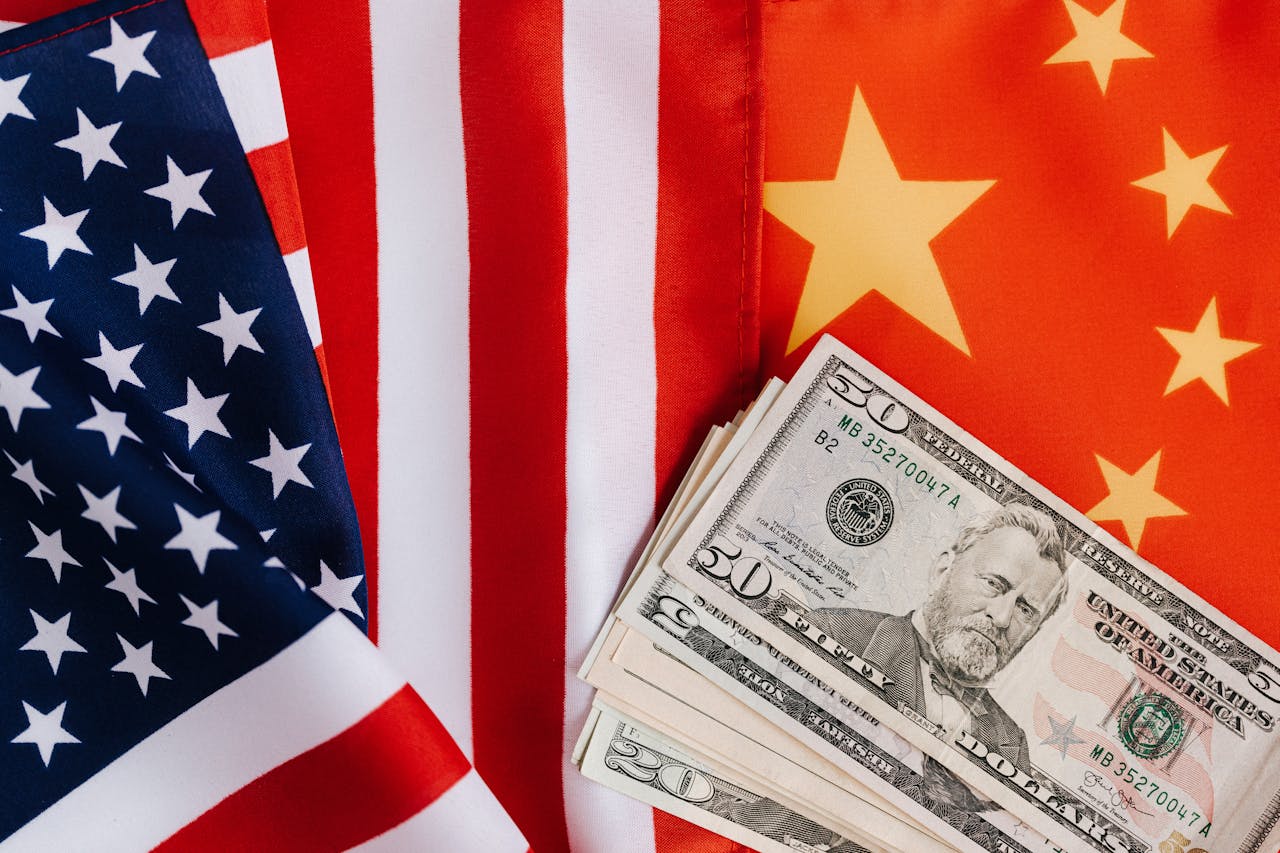Analysis
China’s Two-Speed Growth Persists: Eyes on Tariff Developments & Domestic Demand
.jpg)
April’s macroeconomic data reinforces the picture of a “two-speed” Chinese economy: manufacturing and exports remain resilient, while consumption and real estate continue to weigh on the recovery. This divergence is prompting policymakers to strike a delicate balance—securing foreign investment and external demand on one hand, while working to revive domestic confidence and consumption on the other.
Strong External Demand vs. Weak Domestic Confidence
China’s industrial output rose 6.1% year-over-year in April, beating both market expectations and March’s 4.5% growth. The strong showing points to solid momentum in manufacturing, underpinned by both domestic and external demand. Exports were also a bright spot, up 8.1% despite a sluggish global trade backdrop. High-end manufacturing goods—particularly electric vehicles, solar cells, and lithium batteries—led the way, underscoring China’s rising global competitiveness in green technology and advanced manufacturing.
But that export strength hasn’t translated into stronger domestic demand. Retail sales rose just 5.1% in April, falling short of forecasts (6%) and slowing from March’s 7.1% pace. As a key gauge of consumer sentiment, the softer-than-expected retail data highlights ongoing caution among Chinese households - a continuation of the “consumption conservatism” trend seen in recent quarters.
The root causes are clear: a still-struggling property sector, pressure on household balance sheets, and uncertainty around future income are all dampening consumer and private investment appetite.
Policy Support Unfolds: First LPR Cut of the Year
Despite a flurry of stimulus measures, challenges like deflationary pressures and high youth unemployment remain entrenched, meaning the “strong manufacturing, weak domestic demand” pattern is unlikely to shift meaningfully in the short term. That said, as long as trade tensions with the U.S. don’t escalate further and global demand stays steady, exports are likely to continue anchoring growth. This suggests that China’s “two-speed” growth pattern may persist for some time.
Put differently, if China wants to truly pivot from an export-driven model to one powered by domestic consumption—particularly in housing and retail—more targeted and structural policy support will be required.

While the de-escalation in tariffs this May has eased some external risks, the global outlook remains fraught with uncertainty. U.S.-China trade talks are set to resume after a 90-day pause under their latest agreement. Against this backdrop, Chinese authorities have once again moved to bolster domestic demand. On May 20, the Loan Prime Rate (LPR) was cut for the first time this year—both the 1-year and 5-year+ tenors were lowered by 10 basis points, breaking a six-month hold.
For the property sector, the rate cut translates into cheaper mortgages, which could help reduce buyer hesitancy and stabilize the sluggish housing market. More broadly, the LPR cut should ease borrowing costs for households and businesses alike, offering a tailwind for both consumption and private investment.
Given that inflation remains subdued—with factory-gate prices (PPI) still in negative territory—there is ample room for further monetary easing. With both external and internal demand still uncertain and growth pressures lingering, there is a realistic chance of additional LPR cuts later this year.
Policy Watch Begins: Awaiting the Next Signals

With two rounds of stimulus freshly in place, policymakers are now likely to enter a “wait-and-see” phase to assess their impact. Meanwhile, global trade remains highly volatile, and the next 90 days of U.S.-China engagement could heavily influence market sentiment. As such, the short-term policy stance is likely to remain cautious and reactive—allowing breathing room to evaluate results and preserve flexibility for more targeted action.
If exports continue to outperform and stimulus begins to take hold, China may still hit its full-year GDP target of around 5% without the need for more aggressive policy shifts. In particular, if the U.S. adopts a more cooperative stance toward Chinese firms in strategic industries, it could unlock new growth avenues for China’s high-end manufacturers—potentially triggering another round of export dividends amid a reshaped global supply chain.
However, if Q2 data remains lackluster—especially if consumption and real estate fail to recover—the July Politburo meeting could become a pivotal moment. In that scenario, innovation-driven sectors and consumer demand are likely to emerge as the dual pillars of the next wave of stimulus, possibly accompanied by a more forceful mix of fiscal, monetary, and industrial policy tools.
Overall, China’s recovery remains structurally uneven, marked by resilient exports and manufacturing on one hand, and underwhelming domestic demand on the other. With consumption and real estate still dragging on growth, the path forward hinges not just on propping up GDP—but on restoring confidence and rebalancing toward a demand-driven model. The ultimate goal: transitioning from a manufacturing-led export powerhouse to a consumption-fueled economic giant.
The material provided here has not been prepared in accordance with legal requirements designed to promote the independence of investment research and as such is considered to be a marketing communication. Whilst it is not subject to any prohibition on dealing ahead of the dissemination of investment research we will not seek to take any advantage before providing it to our clients. Pepperstone doesn’t represent that the material provided here is accurate, current or complete, and therefore shouldn’t be relied upon as such. The information, whether from a third party or not, isn’t to be considered as a recommendation; or an offer to buy or sell; or the solicitation of an offer to buy or sell any security, financial product or instrument; or to participate in any particular trading strategy. It does not take into account readers’ financial situation or investment objectives. We advise any readers of this content to seek their own advice. Without the approval of Pepperstone, reproduction or redistribution of this information isn’t permitted.